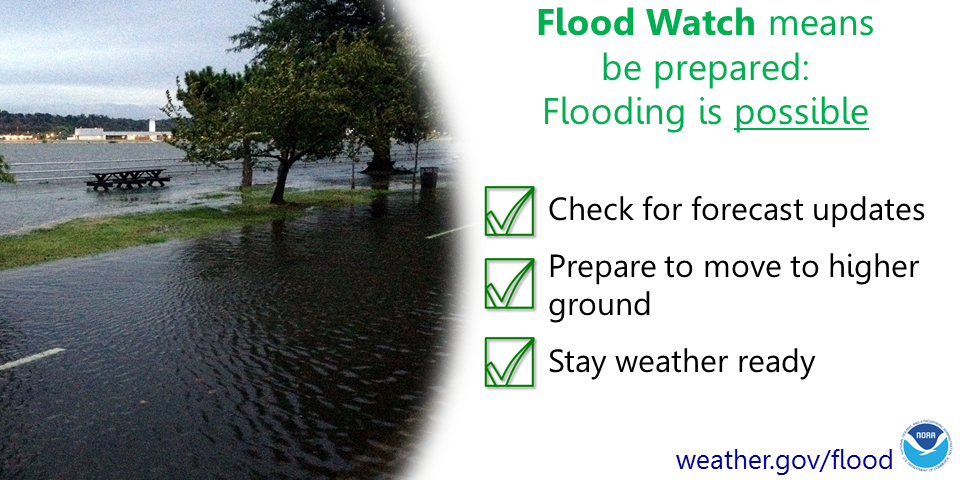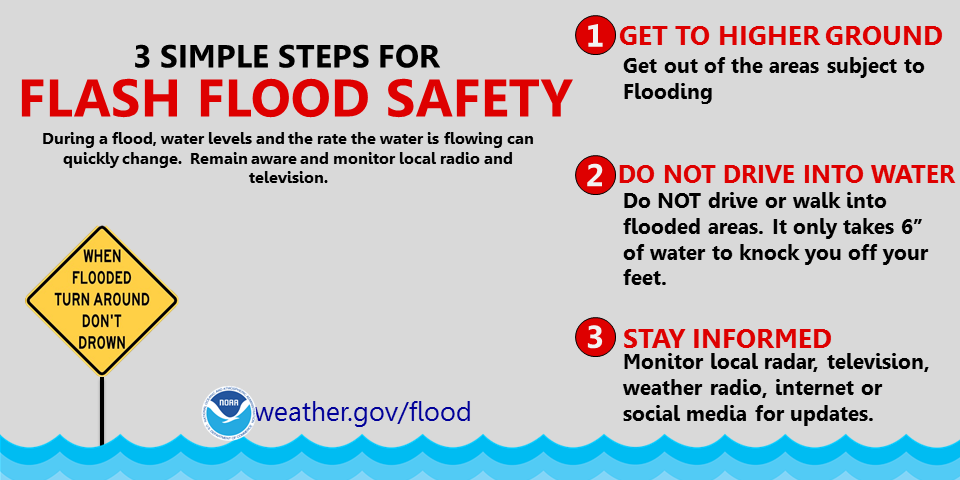2022 Flood Safety Awareness Week is March 14th - 18th
--- Today’s topic is...Flood Hazards ---
Flood Definitions
|
- A flood is defined as any high flow, overflow, or inundation by water which causes or threatens damage. This usually occurs with prolonged rainfall over several days, intense rainfall over a short period of time, or when water from an existing source moves too quickly (i.e. snowmelt, dam break, etc.). |
Flood Products
| - A flood watch indicates that conditions are favorable for flooding to develop. Be prepared to move to higher ground. Listen to NOAA Weather Radio, commercial radio, or television for additional information. - A flood warning means that flooding is occurring or will occur soon. If advised to evacuate, do so immediately. - A flash flood warning means that flash flooding is occurring or imminent. Move to higher ground immediately. Flash Floods develop much quicker than river floods. |
|
 |
|
 |
River Flooding and Associated Flood Categories
River flooding occurs when rivers rise and overflow their banks, inundating areas that are normally dry. With river flooding, the NWS uses different categories to convey the expected flood severity at each of our river forecast points. These flood categories are: Minor, Moderate, and Major. Each category has a definition based on property damage and public threat to areas along a particular reach of river upstream and downstream from the forecast point. These established categories are closely coordinated by the local NWS office, the servicing River Forecast Center (RFC), and other Emergency and Public Officials.
Other Flood Hazards
|
- Snowmelt: Flooding due to snowmelt most often occurs in the spring when warming temperatures quickly melt the snow. The water runs off the still partially frozen or already saturated ground into nearby streams and rivers, causing them to rapidly rise and sometimes overflow their banks.
|
|
Understanding the different flood hazards and knowing the actions to take before, during, and afterwards can help you protect your life, the lives of your loved ones, and your property. Check out these important flood websites for more information... https://water.weather.gov/ahps/NWS AHPS: Flood Safety Awareness: https://www.weather.gov/safety/flood TADD: https://www.weather.gov/safety/flood-turn-around-dont-drown Be a force of nature: https://www.weather.gov/wrn/force |